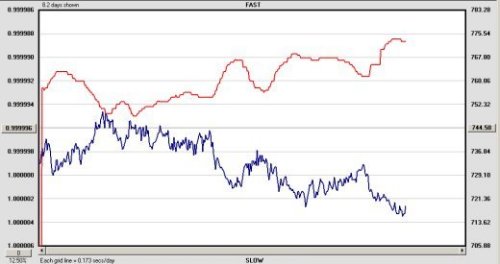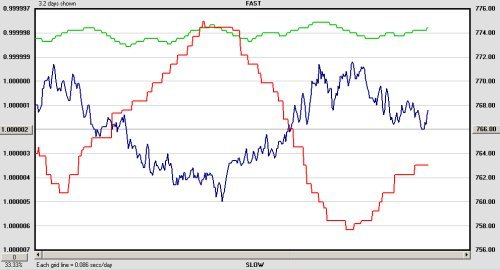Pressure for 8 Days Click on Picture for full size.
This clearly shows the effects of Barometric Pressure on the clock over an eight day period. Each axis has been scaled to emphasise the relationship
The upper line is the red pressure curve, while the lower line is the blue rate curve of the clock.
For Microset owners the original Microset file can be downloaded here. (You will need to apply a 'boxcar' average of 10. Sampled at 4 minutes / 240 readings)
Air pressure (mm per Hg) has been manually added to the .mst file from an external airport data website
Air pressure (mm per Hg) has been manually added to the .mst file from an external airport data website
Barometric error is a very real phenomenon that affects all pendulum clocks. On the majority of clocks the various errors that exist are all usually related directly to the quality, and thus the expense, of the movement. As these inbuilt errors are so great, and the barometric error so small, you will not notice any difference as the barometer pressure changes. Only on a precision clock, with its attendant accuracy, can it clearly be seen.
I won't explain a great deal as frankly I don't comprehend some aspects of this myself, but the rate of the clock is affected by both 'flotation' errors and 'accession to inertia' errors. The result is for the clock to gain in periods of low pressure, whilst loosing time in periods of high pressure.
In the graph above if you ignore the temperature variation (on this particular clock the temperature compensation is quiet good anyway) you can see that the lower line of the rate is closely linked to that of the top pressure line.








